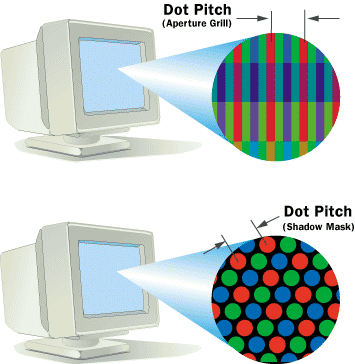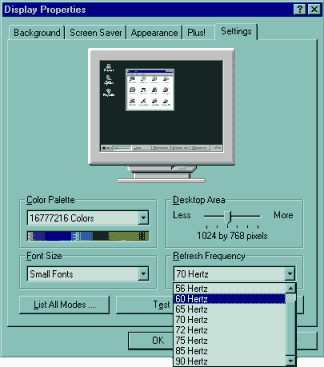
Refresh
Rate
In monitors based on CRT technology, the refresh rate is the number of times
that the image on the display is drawn each second. If your CRT monitor
has a refresh rate of 72 Hz, then it cycles through all the pixels from
top to bottom 72 times a second. Refresh rates are very important because
they control flicker, and you want the refresh rate as high as possible.
Too few cycles per second and you will notice a flickering, which can lead
to headaches and eye strain.
Televisions have a lower refresh rate than most computer monitors. To help adjust for the lower rate, they use a method called interlacing. This means that the electron gun in the television's CRT will scan through all the odd rows from top to bottom, then start again with the even rows. The phosphors hold the light long enough that your eyes are tricked into thinking that all the lines are being drawn together. Because the speed of your monitor's refresh rate depends on the number of rows it has to scan, it limits the maximum possible resolution. A lot of monitors support multiple refresh rates, usually dependent on the level of resolution you have chosen. Keep in mind that there is a tradeoff between flicker and resolution and then pick what works best for you.

